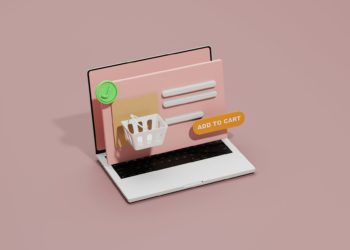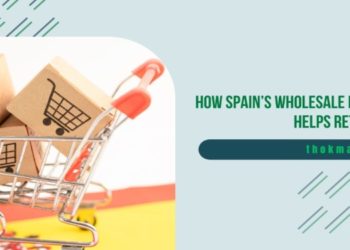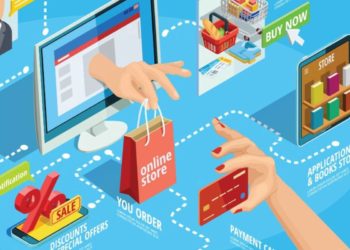E-commerce is poised to be worth over $50 trillion in 2028, and there’s no better time than now to get involved with this lucrative market. Selling products online isn’t as easy as it sounds, though. You won’t succeed much if you post a few items online and hope buyers come.
You need to promote your products and build a solid reputation as a reliable seller. With the right strategies, you can make more money than you ever dreamed possible. Here are some selling tips to help you get started.
Pick a Marketplace
Amazon is one of the biggest and most trusted marketplaces in the world. They have millions of active users who are looking for products every day. You can use this to your advantage by selling products on Amazon.
You should know that Amazon charges a small fee for using its marketplace, but loans for Amazon sellers are available to offset the costs.
EBay is another well-known online retailer that offers access to millions of buyers around the world who want everything from household goods to electronics and more. You can also sell used items to get your business off the ground more quickly than if you had to purchase new products.
Shopify is an excellent option for people who want an online store but don’t have the experience to build a website from scratch. With Shopify, you can create your own store in minutes using pre-made templates.
Collect Your Product Information
For your products to succeed, you need to find products that are in demand, have high margins, and appeal to customers. You can start by looking at what other entrepreneurs have sold successfully. Search for products on Amazon and eBay to see what buyers are looking for.
You also need to determine whether any regulations apply to your product. This is especially important if you’re selling food, cosmetics or white label supplements.
Choose a Payment Gateway
Payment gateways process credit cards, debit cards, and ACH (automated clearinghouse) payments. When you register your online business with a payment gateway, they’ll provide you with a merchant account.
Merchant accounts allow you to accept electronic payments. The gateway will charge fees for each transaction processed. However, there are no other monthly costs associated with most merchant accounts.
Create a Listing and Shipping Plan
Set up your listings to include the cost of shipping so buyers are aware of it before their purchase.
It’s also important to make sure you’re charging enough for your products so you still make a profit after paying for shipping costs.
Test and Scale
Test your product before you scale. The only way to know if you have a lucrative offering is by trying it out with real customers.
The test phase is where you find out what works and what doesn’t work with your customers, as well as how much money they’re willing to spend. You also need to figure out which marketing channels are most effective at driving sales (e-mail marketing vs. Facebook ads vs. Instagram ads).
Once you’ve nailed down those above, you can purchase more inventory and increase your marketing budget. The goal here is to get more customers while maintaining high standards of quality.
Find Your Niche
It’s important to sell products you’re passionate about. This will keep you motivated when you don’t have many customers.
Make sure there isn’t too much competition in your niche. You want customers to find what they’re looking for when they search for keywords connected with your products.
Create a Marketing Plan
To create an effective marketing strategy, think about what your marketing goals are. Do you want more traffic on your website? More sales?
Once you answer these questions, look at which channels will help achieve those goals. If increasing traffic is one of your top priorities, Facebook ads might be the best channel for reaching new people. For building relationships with current customers, turn to Pinterest or Instagram.
Remember to set specific goals for each channel. If you’re using Facebook ads to increase traffic on your website, for example, set a goal of how many new people to reach every week.
Create an Editorial Calendar
An editorial calendar is a schedule of all the content you plan to publish in the next month or so. It helps you stay organized and have fresh and relevant content.
The calendar can be as simple as a spreadsheet where you list the content by date and type, or it could be an elaborate system with graphics and columns.
Build Your Community
You can use social media to connect with people in your industry, share valuable information, and attract potential customers. Social media is also useful for building relationships between you and your customers with promotional offers and special deals.
Email marketing software allows you to send promotional emails without having to spend hours crafting each message manually. You can send out an email once a week or once a month depending on what works best for your business. Just make sure not too much time passes between them so people don’t forget you exist.
You’ll also want to make sure your email marketing campaigns aren’t annoying or spammy. Avoid sending emails to people who have already opted out of your list and only send relevant information to your subscribers.
Start Selling Products Online the Right Way
Selling products online can be as easy as posting in Facebook’s marketplace or making an Amazon listing. But if you want to start a successful business, you’ll need to do more than that. You need a marketing plan, fast shipping, and great customer service.
You also need to make sure your product is something people want to buy. Find great product suggestions in our e-commerce section. You’ll also find some tips on starting a business, selling on Amazon and Facebook, and more.
David Prior
David Prior is the editor of Today News, responsible for the overall editorial strategy. He is an NCTJ-qualified journalist with over 20 years’ experience, and is also editor of the award-winning hyperlocal news title Altrincham Today. His LinkedIn profile is here.













































































